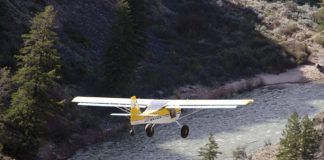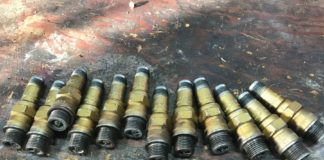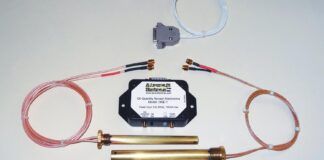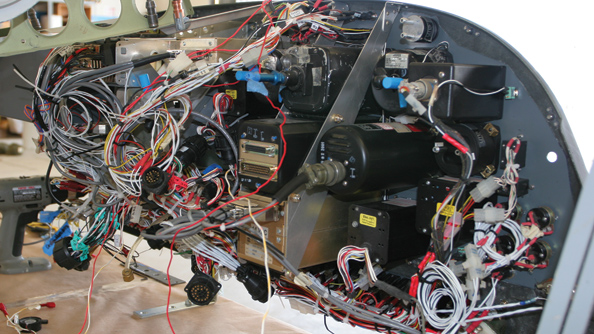
In the old days of kit-aircraft construction, the avionics portion of the project meant wiring a few basic radios. For basic nav/coms and transponders the challenge was getting the power and grounds properly connected. Plus, the old analog technology was basic enough that you could have the avionics portion of the project wrapped up in a week or sooner. These days, the digital interfacing of EFIS displays, autopilots, engine monitors, FADEC systems and WAAS navigators is hugely complex and time-consuming—and your life could hang in the balance. Truth is, the interface complexity of digital ARINC data buses mixed with analog and serial data along with the layers-deep software that tags along can mean work stoppage for some builders. Many are finding that working with a professional avionics shop is key. This is often a good plan, as the right shop can ensure that your avionics suite is reliable and safe while maintaining some custom touches. A good shop can also keep the project on schedule.
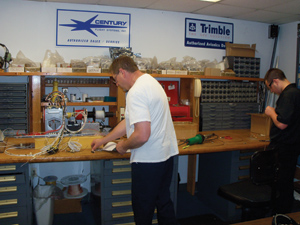
These two guys have been around since the Century/Trimble days, and have seen it all. Shouldn’t you benefit from their hard-earned experience?
Can You Handle It?
First, you’ll need to make an honest assessment of how much of the avionics project you can handle yourself. Be sure to check your electronics ego at the hangar door. Classic is the builder who’s convinced that his prior electronics repair skills from the 1970s qualify as glass-cockpit building experience. If not, he knows someone who’s a famous aero engineer. You can bet solid electronics theory is a prerequisite to installing modern equipment, but part of the task requires the ability to troubleshoot and configure a custom interface once it’s up and running. You’ll also need airframe and engine experience for the interface mix. Most of today’s systems are extremely integrated, and stand-alone systems are a rare find. For the modern kit, there’s no room for short-changing the avionics. There’s too much at stake.
The common trouble we hear about relates to AHARS accuracy. Electronic heading and attitude systems that replace spinning gyros are wonderful devices, but in the wrong hands installation-related caveats are hiding at every wire twist. What’s required here is the acquired ability to recognize electrically dirty and interference-specific locations in the airframe that will affect heading and attitude accuracy. Sadly, we’ve seen some owners simply give up and settle for a VFR-only aircraft—in effect, living with unreliable systems.
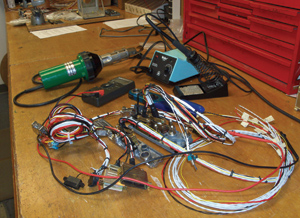
Even basic harnesses like this Garmin interconnect require special tools and wiring skill. If you don’t have specialty crimping tools and expert soldering and crimp technique, you’re asking for trouble.
To be sure, we’ve also seen some impressive and professional avionics builds that were engineered and constructed to high standards. But there are equal numbers of interfaces with wiring and hardware quality that are hardly worthy of even VFR flight. Some are in the accident reports, proving that substandard wiring can be serious business. An arcing electrical bus, unprotected and chaffed wiring harnesses, and improperly routed bundles that jam controls will all ruin your day.
While Experimental aircraft offer flexibility when it comes to selecting parts, you’ll need to be sensible and chose your avionics parts and install hardware carefully. There’s a place for hardware-store-quality fittings and wiring, and it’s not in an IFR avionics suite.
Prewired Harnesses and Wiring Hubs
For builders who have limited electrical knowledge and experience but are competent to construct the mechanical installation, a popular option is to contract out the build of the wiring harnesses. This is a good way to help ensure quality wiring while maintaining a custom edge to the project. Wiring bundles can easily be constructed to builder-specified lengths and equipped with spare data wiring for future upgrades. A good shop will include professional-quality wire labeling for easy identification of system connections. This makes it easier for the builder to route and connect the harness once it hits the aircraft. It also helps with future troubleshooting when components fail.
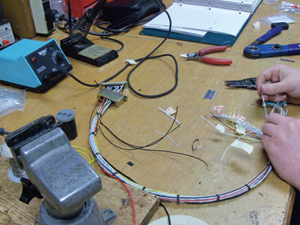
The pros can build a harness that’s truly custom and tailored to your specified lengths. They also provide wire labeling to help you make the connections once the harness hits the aircraft.
As an alternative to a custom harness, you can use an avionics wiring hub that includes prefab, plug-and-play harnessing. While central avionics wiring hubs have trickled down from the business jet and airliner world, they are welcomed with mixed emotions by seasoned avionics wiring techs. Several techs told us they prefer wiring that is built for component-to-component connection. This has its benefits. First, with a high level of data being transferred via serial and ARINC streams, too many breaks in the shielding of the harnessing (too many extra connectors) increase the risk of RF interference, the sources of which are many within a small airframe.
One tech who has worked with both commented that custom wiring can be lighter than the prefab harnesses found with some hubs. Further, prefab bundles can be heavy and bulky to work with in tight panels, he said. More connections increase the potential for intermittent connections, and poor solder or crimp technique is always a concern. And hubs can induce longer runs of cabling because the junction might not be located in proximity to the avionics on the panel.
Still, hubs could decrease the amount of labor and costs associated with a complex avionics suite, though you’ll still need to purchase the hub and wiring. Approach Fast Stack—a respected source of prewired harnesses—has Garmin GNS 430/530 interfaces that start at around $500. If the hub concept is attractive, there’s no reason a competent avionics shop can’t build you a custom hub system based on a particular fit for a given aircraft.
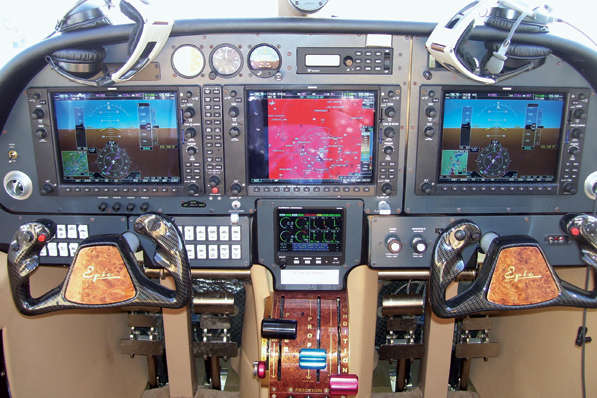
A builder with a completed Glasair I told us that he was pleased with the wiring hub in his aircraft. He boasted of its easy installation with facility for future growth. Then again, he also battles heading problems with the EFIS in his airplane, rendering it a VFR-only machine. Admittedly, this is one data point, and the problem could be any number of culprits, but there is something to be said for keeping the wiring as simple as possible.
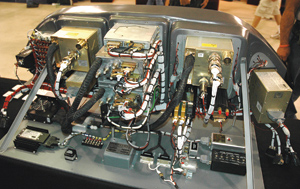
Experienced avionics people can ensure wiring is properly and safely routed behind the panel. Chafed wiring that results from improper routing technique is what NTSB reports are made of.
Manuals and Docs
For some avionics equipment the only way to gain access to installation manuals is through an authorized dealer. Some manufacturers strongly encourage builders to work with an established and manufacturer-recognized shop to obtain these manuals. To be specific, Garmin said that while builders can gain access to manuals in the Experimental and LSA categories of Garmin equipment right from the company web site, manuals for certificated products such as the hugely popular GNS 400/500W-series equipment will need to be obtained from an authorized dealer. Garmin’s hope is that this builder/dealer relationship might ensure a quality installation in the long run. Moreover, many builders think they can handle the entire installation until they set their eyes on the requirements spelled out in the manuals. For the inexperienced, the pages and pages of interconnect schematics and associated footnotes can be intimidating.
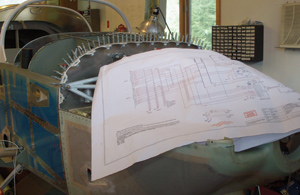
Avionics installations require the ability to interpret and follow complicated schematic and interconnect diagrams.
Some builders just make wrongheaded decisions. For instance, the builder of an impressive turboprop kit aircraft went through the added expense and effort to wire all of the intercom stations with Bose ANR power plugs. This is fine, but he left out an important item: at least one set of standard mic and phone jacks for plugging in a traditional headset. When a maintenance crew had to ferry the aircraft they were stuck because no one had a set of Bose headsets with single-plug interface. The owner was nowhere to be found to fork one over. The point is that if the builder had worked with a shop, it would have suggested installing a set of normal audio jacks for redundancy.











